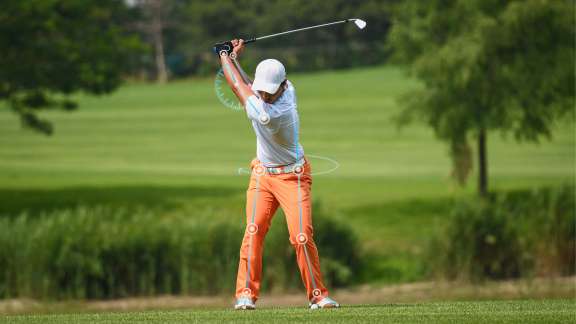Magazine
Biomechanics Of The Golf Swing
Golf is a club and ball sport. The main objective of golf is to hit the ball and make it land in the hole or cup set on the golf course with as few strokes as possible. A good golf shot depends primarily on applying accurate technique rather than power and strength.
Every golfer has his own golf swing technique however, the ideal golf swing can be obtained by following proper biomechanics. The biomechanics involved in the golf swing are quite complex. To improve performance and achieve a good shot, a golfer’s muscles and joints must work in proper coordination and produce the appropriate amount of force and tension.
Proper study and application of golf swing biomechanics helps golfers achieve the ideal golf stroke without injury.
Golf Swing Phase
The golf swing basically has four main phases, namely set up (preparation), backswing (back swing), downswing (down swing), and follow-through (advanced motion).
Preparation or Approach
The initial phase of the golf swing is called the set-up or approach phase. It forms the basis of the golf swing. The main focus of players during this phase is to maintain good posture. The player’s body must be parallel to the ball to establish dynamic and static balance.
To maintain this, about 50-60% of the golfer’s weight must be on the back foot. The stance taken by the golfer or the distance between the golfer’s legs is proportional to the width of the support base and the range of movement available at the hips and feet, therefore it should not be too wide or too narrow. If the stance is too wide, it tends to affect hip rotation, whereas if it is too narrow, it affects stability and hinders full use of leg movement.
The right lateral shoulder should be tilted at an angle approximately equal to 16 degrees. The grip on the golf club must be strong and effective to ensure a good shot. In addition, golfers must maintain stability. The stability principle states that the lower the center of gravity, the larger the base of support.
Also, the closer the center of gravity to the base or support, the greater the player’s steadiness. For this purpose, the athlete should bend his knees slightly. The displacement covered by the ball after it has been hit and its probability of hitting the hole is highly dependent on the accurate execution of this set-up phase.
Backswing
The second most important phase of the golf swing is the backswing phase. After establishing proper posture and accurate alignment with the ball, the golfer swings the golf club backwards. The swing is extended to an extreme angle.
The main purpose of the backswing is to establish an effective position for the downswing. A large amount of kinetic energy is generated by initiating movement on the stick. This energy is then transferred to the ball during the collision.
When the golf club is moved backwards, a large amount of force is transferred to the very front of the right foot.
At the same time, sheer strength was transferred to the inner side of the left foot. Then it will be converted into the torsional force needed to turn the body and hit the ball. The muscles of the hips, spine, knees, shoulders and other parts of the body are prone to rotation.
The order followed during rotation with respect to the central axis parallel to the midsection is the knees, hips, and torso. The swing supports the player and supplies the energy needed to perform the backswing and downswing.
The impact force generated when hitting the ball increases as the backward swing phase is increased. In addition, speed development occurs in this phase.
Rotation of lower body parts such as legs, hips, knees, and other body parts depends on a number of physical parameters such as joint range of motion, muscle extensibility, stretch reflex, and segmental strength of the lower body, hips, core, and upper back.
If the athlete does not have any of these parameters, he is more likely to suffer from a reduced toque and therefore a poor stroke.
Downswing (Swing Down)
After doing the backswing, players tend to move towards the next phase of the golf swing, namely the downswing phase. In this phase, the player shifts his weight onto his left foot while moving his pelvis toward a deliberate and imaginary target line.
When performing this body movement, a large amount of kinetic energy is generated, which is then circulated as a chain force that is applied to the front side of the right leg and the inside of the left leg.
In the case of right-handed golfers, this produces a counterclockwise torque, whereas in the case of right-handed golfers, the direction of the resulting torque will be reversed.
The torque generated by the player’s lower body is then transferred to his body with the production of additional amounts of energy associated with the structures of the lumbo, pelvis, and hip complex, which creates a clockwise counter-acceleration of the upper pendulum.
Follow-through
After the impact force is generated or after the stick hits the ball, the next stage begins. This is the final stage that completes the biomechanics of the golf swing. This includes positioning the golf club behind the golfer and is performed by rotating the body until the finishing point is reached.
The kinetic energy of the golf club due to the backswing and downswing slowly fades away. Some of the energy will be transferred to the ball, while the remaining part will be lost in the form of heat and friction. This is the deceleration phase of the golf swing where the starting position, speed, and state of the body are restored. The body is slowly decelerated.
Source: Sainsmania


